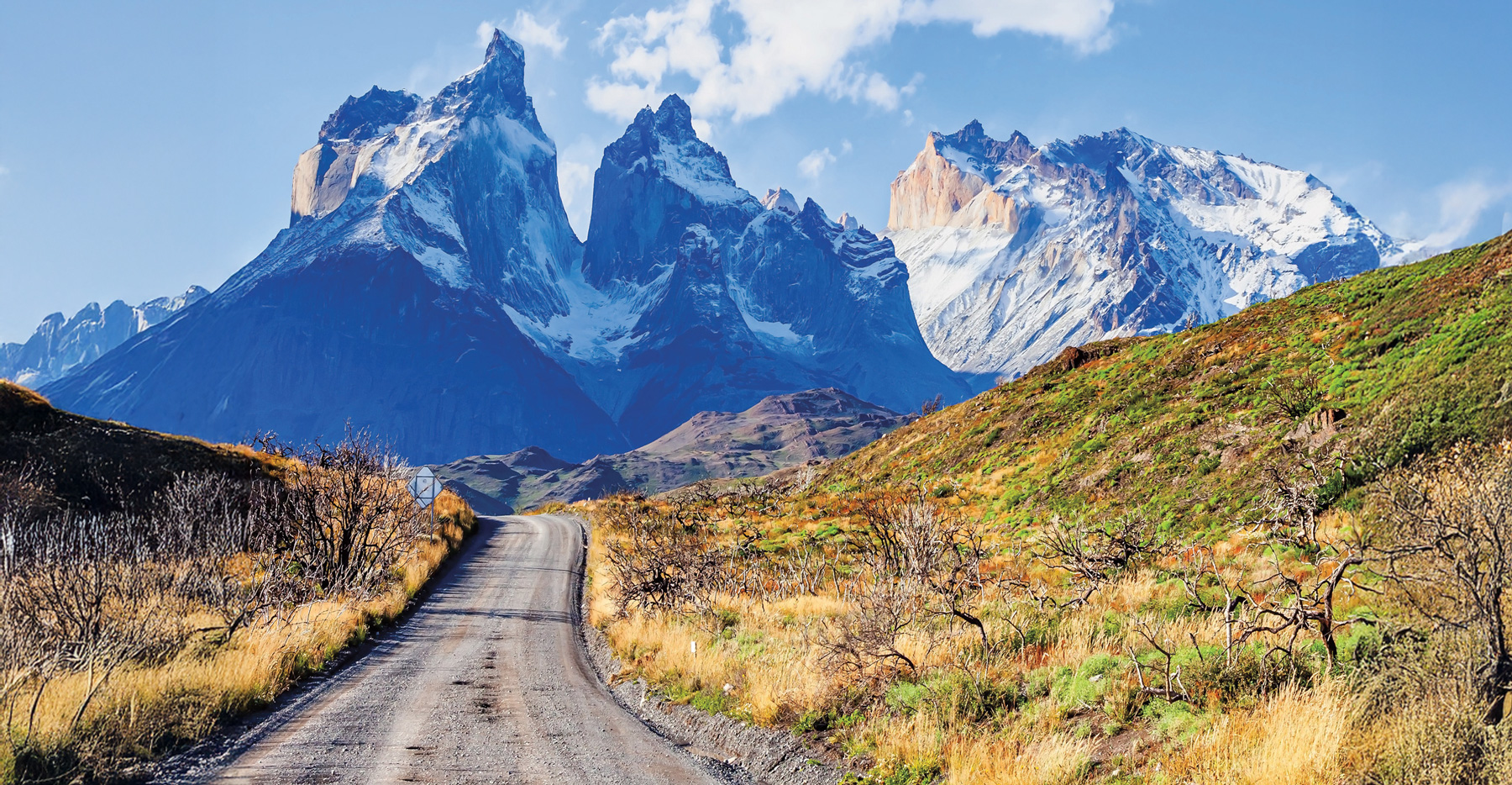
The Palm
Grape: Grenache, Cinsault, Carignan
Fresh, clean and playful, expect gentle fruit and a crisp finish.
here are times when the light is just right, and the air feels just so, that for the briefest of moments I’m transported completely to Provence. Visceral and fleeting, the moment passes before I can fully grasp it, and so I’m left once again with just memories—but what memories they are. Like a recipe that combines simple, spare ingredients to make something beautiful, Provence seems comprised of life’s essential bests. The food, the landscape, the architecture, the wine… The wine. Grapes, sun, wind, rain and time, the same anywhere wine is made. Yet here, somehow, so much more, as if the very essence of the place gets bottled, sunshine and all, and exported as beauty to the rest of the world. And it is the wine that proves it, really: more than a region on a map, more than a terroir or a gourmand’s playground, Provence is a state of mind.
“Provence is the oldest wine-producing region in the world, and for that matter, rosé, where it was first made, the oldest type of wine in the world,” says Sacha Lichine, and he would know. The man behind Château d’Esclans and the world’s most highly regarded family of Provençal rosés, including the global phenomenon Whispering Angel, says that rosé is at the heart of any Provence experience, no matter where it takes place. “Some have said that a glass of rosé from this region serves as an ‘ambassador to Provence’ and, as our wines play an integral role here, that proposition goes a long way towards Provence being a state of mind.”
Thanks to Lichine, quite a lot of the world enjoys that state. Launched in 2007, Whispering Angel is now sold in more than 100 countries and comprises roughly 20 percent of all rosés consumed in the United States each year—Lichine’s goal from the start, he says.
“As the idea was to make a global marque, we wanted to reach well-traveled Americans who, in particular, visit select destinations around the world and would see the wines in such locales,” he affirms. “Beyond that, opening up distribution in excess of 100 countries clearly put our marques on the global map. So essentially, the vision became a reality.”
The reasons for that include the technical brilliance of wines from Château d’Esclans, their near-perfect balance of fruit, minerality and appealing color, but they also offer a formidable note of je ne sais quoi, and it is this that makes the wines so transportive. Sitting poolside at home in Florida enjoying a glass of Rock Angel, a more complex sibling to Whispering, I’m immediately returned to the South of France and to a moment that would have been ordinary anywhere else:
Looking out the open window of our suite at the auberge (inn), the moment is pure Provence: vines soaked in sunshine, the dry smell of summer earth drifting in through the open window, and the pleasant crunch of tires moving over crushed gravel. My husband has returned from the market with a bounty, and we feast on a small stone terrace overlooking trees and fountains in a charming courtyard. The bottle of rosé we enjoy is pure light, even though we’re sitting in the shade. Wandering out front we take in some of the sculptures placed around the auberge, and then head to the pool to float and frolic by ourselves. No other guests in sight, just the vines and passing clouds in the bluest sky.
We’d traveled to Avignon with our then 2-year-old daughter and rented a quirky Renault to explore the wines, but also to discover the region’s food, and thankfully there was plenty of both. The westernmost part of the region, comprised of Vaucluse and Bouches-du-Rhone, is known for Arles, where Van Gogh often painted, for its medieval towns, and for the coast, of course, which includes Marseille and Cassis. On the eastern border there are the Alps and Cannes, while much of the wines are found in the central regions, from Haute-Alpes in the north to the Var in the south. It is in Var that Château d’Esclans is found, along with most of Provence’s rosé production. The property dates to before the 12th century and was acquired by Lachine in 2006, who moved from Bordeaux to get it and its on-site old Grenache vines, some dating back 90 years. Visitors are given a tour of the estate’s original 12th-century cellar and invited to taste the Château’s line, which includes six wines, all of which benefit from the climate and soil—and from Lichine’s expertise.
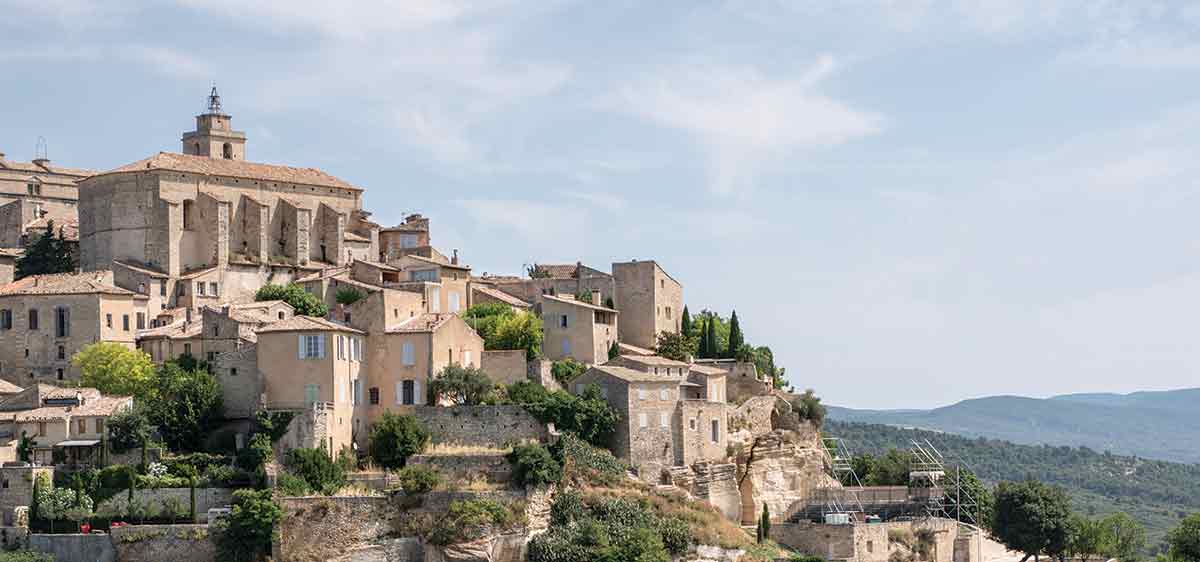
“We are steadfastly dedicated to craftsmanship,” he explains, “something initiated by my vision and precise execution by our founding Consulting Oenologist, the late Patrick Leon who, since the beginning of 2019 has been succeeded by his son and our Technical Director beginning with the 2011 vintage, Bertrand Leon. The approach both men practiced and continue to, father in spirit and son in the Cellars, is to what you can attribute our ability to balance consistency and quality with formidable production.”
As amazing as Esclans is, we spent most of our time closer to Avignon, staying at various local auberges in a few different towns. While Gordes with its incredible hillside setting and charmingly tight streets was memorable, we began our trip at the lovely Domaine Des Peyre, run by former Gault & Millau guide director Patricia Alexandre and her partner, hotelier and entrepreneur Georges Antoun. Using the auberge as a home base, we explored local villages, took a day trip to Chateauneuf-du-Pape, and posed for pictures in the ruins of a 14th century castle frequented by Pope John XXII. Sampling the local markets and cooking for ourselves in our suite’s kitchenette was great, but the trip didn’t find its pace until we began discovering local restaurants. Among them, anyone visiting the area should find time for a meal at L’auberge de Carriers in Robion, which we found despite the Renault’s navigation system. Though the car spoke English, its directions were more like poorly translated suggestions than useful navigation, and so we mostly had to find our own way, which in the end meant that we saw more and a far richer experience. The food at L’auberge de Carriers was incredible, as was much of what we ate during our trip, and it inspired me to move from the table to the kitchen, a shift that was possible at our next stop: Auberge La Fenière.
La Fenière lay at the end of a beautiful drive past fields of sunflowers and Pont Royal Golf Club, France’s only course designed by the great Spaniard Seve Ballesteros. Passing that and its brutally difficult greens, we drove on through the idyllic hillside village of Bonnieux and eventually arrived at our destination.
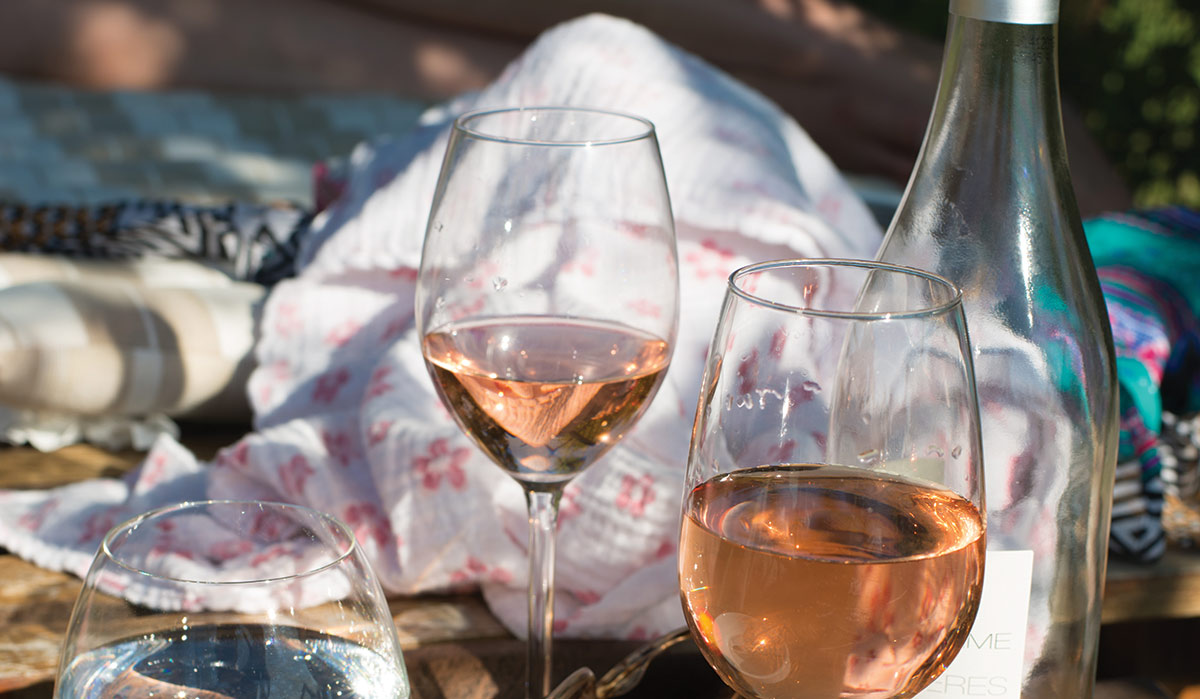
This auberge is run by Chef Reine Sammut, a Michelin-starred chef twice voted “Best Woman Chef in France,” who hosts a cooking school in her elegant inn. Though I’d hoped to study French cuisine, the theme during our visit was “Italian,” and when I walked into her kitchen—late—the class was already in full, exuberant swing. Without so much as a bonjour I was handed an apron and ushered to a spot between two other women. Heads down, they were engaged in the task at hand—a task I soon discovered was nearly impossible. In front of me: a tiny knife and, next to it, a tiny pile of tiny sardines, which I was supposed to filet. I had never fileted a sardine, and it seemed a job more suited to a doll than to a full-size human. To make things worse, Reine was giving instructions in French, and if I’m being very generous with myself I caught maybe 20 percent of what she was saying. I tried to dive in, gripping the tiny blade, but I made a mess of my first fish, and then I mauled my second. Reine noticed as I floundered (forgive that), using too much pressure on the knife at first, and then too little, and she was immediately by my side. Smiling, she patiently tried to walk me through it. Someone was translating, but it didn’t help. Normally this would have been the end—I tend towards fury in the face of frustration. But this time, with Reine’s gentle voice encouraging me on, I took a breath and tried again. As I began yet another attempt to filet the tiniest fish I’d ever seen with the tiniest knife I’d ever held, Reine stopped my hand, looked at me, and said two words I finally understood: “Avec confiance.” With confidence.

So the class went, and by the end I’d embraced the spirit of the place and confidently contributed to the creation of some fantastic food—with full credit going to Reine. Watching her flit around the kitchen was like a master course in life: grace under pressure. So many pans on the burners and nothing burnt. And the whole time, stress-free and quick to laugh. No ego. No frenzy. Confiance. Her class got me out of my head, and before I knew what was happening I was laughing, too, at jokes I didn’t understand because they were told in French, and cooking beautiful food as if I’d been doing it my entire life. Later we shared a table and conversation with the other students and family outside, dining on our creations (and some of Reine’s) under vines. As another bottle of wine was opened, and then another, and so on, and as the afternoon turned into evening and finally night with the stars overhead, the warmth of the meal and new friends settled in and I knew that I would never leave this place, not really. And I haven’t. California, New York, Florida… There are times when the light is just right, and the air feels just so, and I open a bottle of something beautiful from Château d’Esclans, and for a moment I’m transported back to Provence and to my memories—but what memories they are.
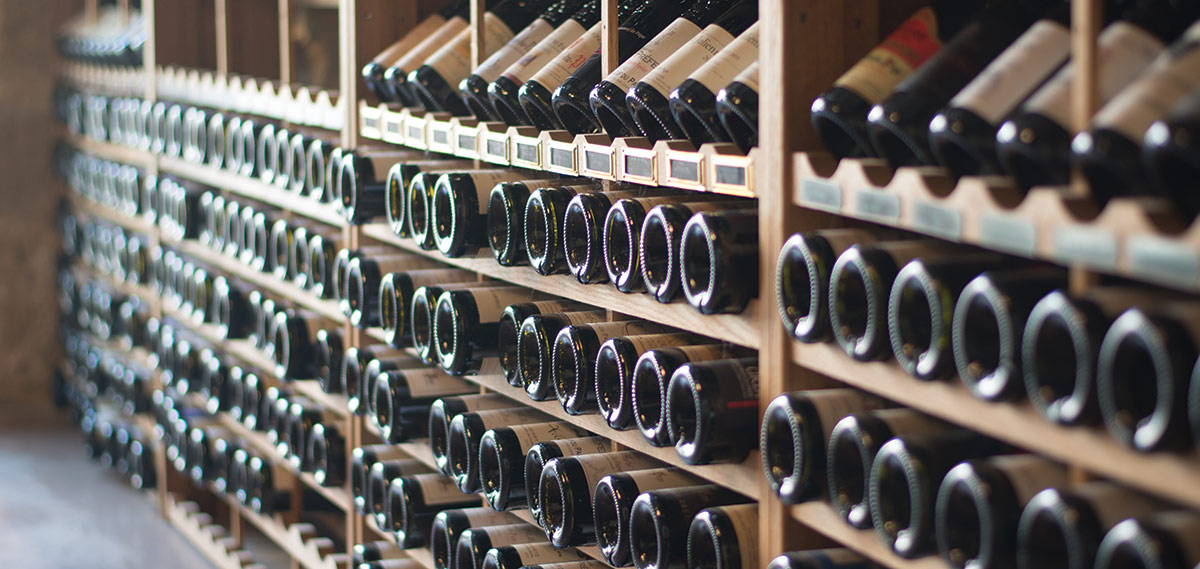
Château d’Esclans offers six glorious rosé wines, each with its own personality, and each with enormous appeal whether you’re in Provence or just imagining that you are

A word from Château d’Esclans owner, Sacha Lichine:
“As you taste through the range, different taste profiles present themselves. Those profiles are linked to complexity and intensity amongst other characteristics, which are subjective to expert tasters and consumers alike. In terms of reflecting the different dynamics of one’s personality, the most meaningful correlation that can be made to this idea is to realize that the range conceived as it was is intended to provide choice relative to what may be an agreeable aperitif drink up to wine that is more complex, structured and food-driven (the latter of which was not really heard of relative to rosé at large until we launched the range in 2006). We also worked a lot on salinity in the wine-making process, which is a sign of minerality—a key distinguishing factor to our wines.”
Grape: Grenache, Cinsault, Carignan
Fresh, clean and playful, expect gentle fruit and a crisp finish.
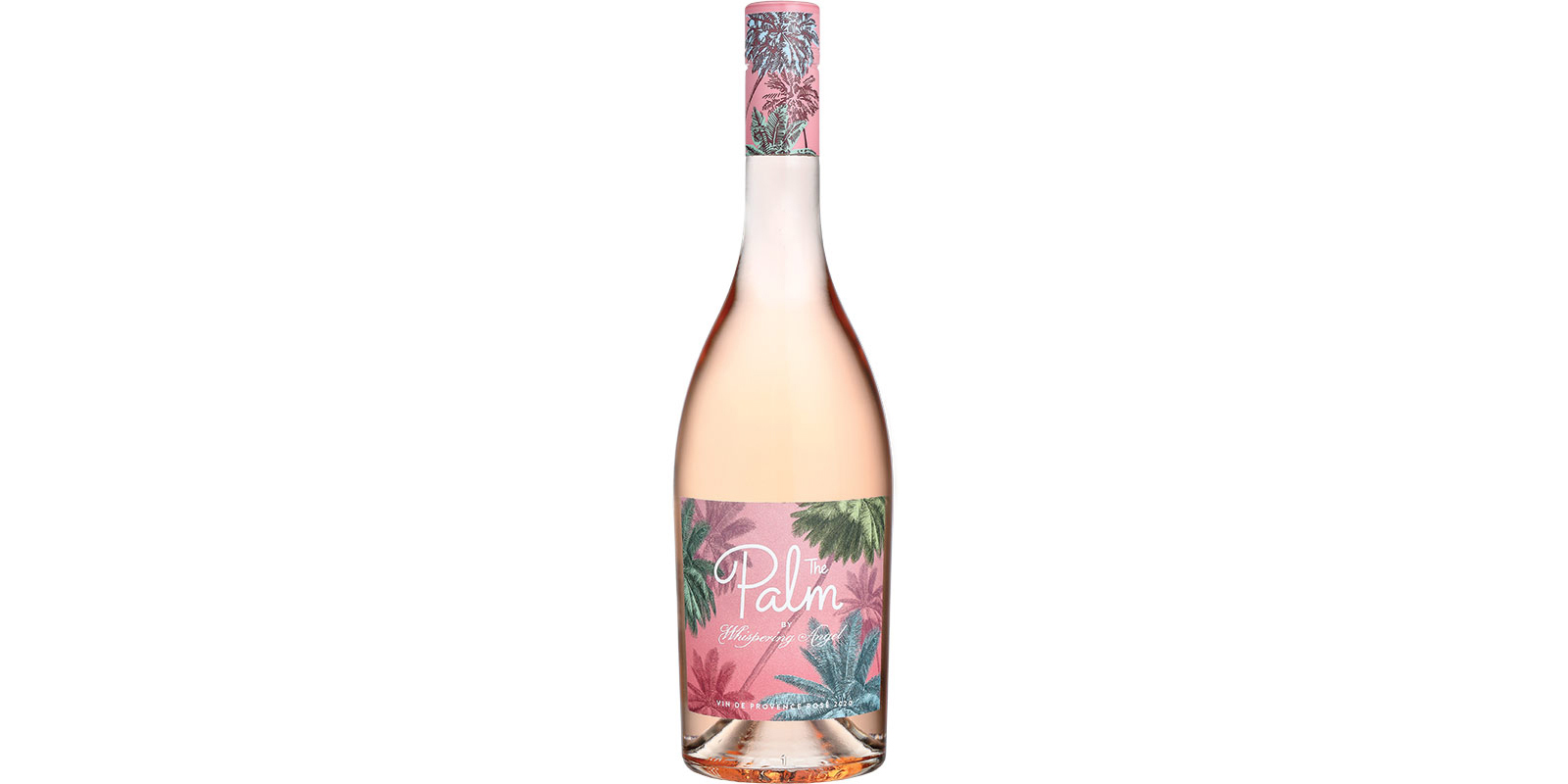
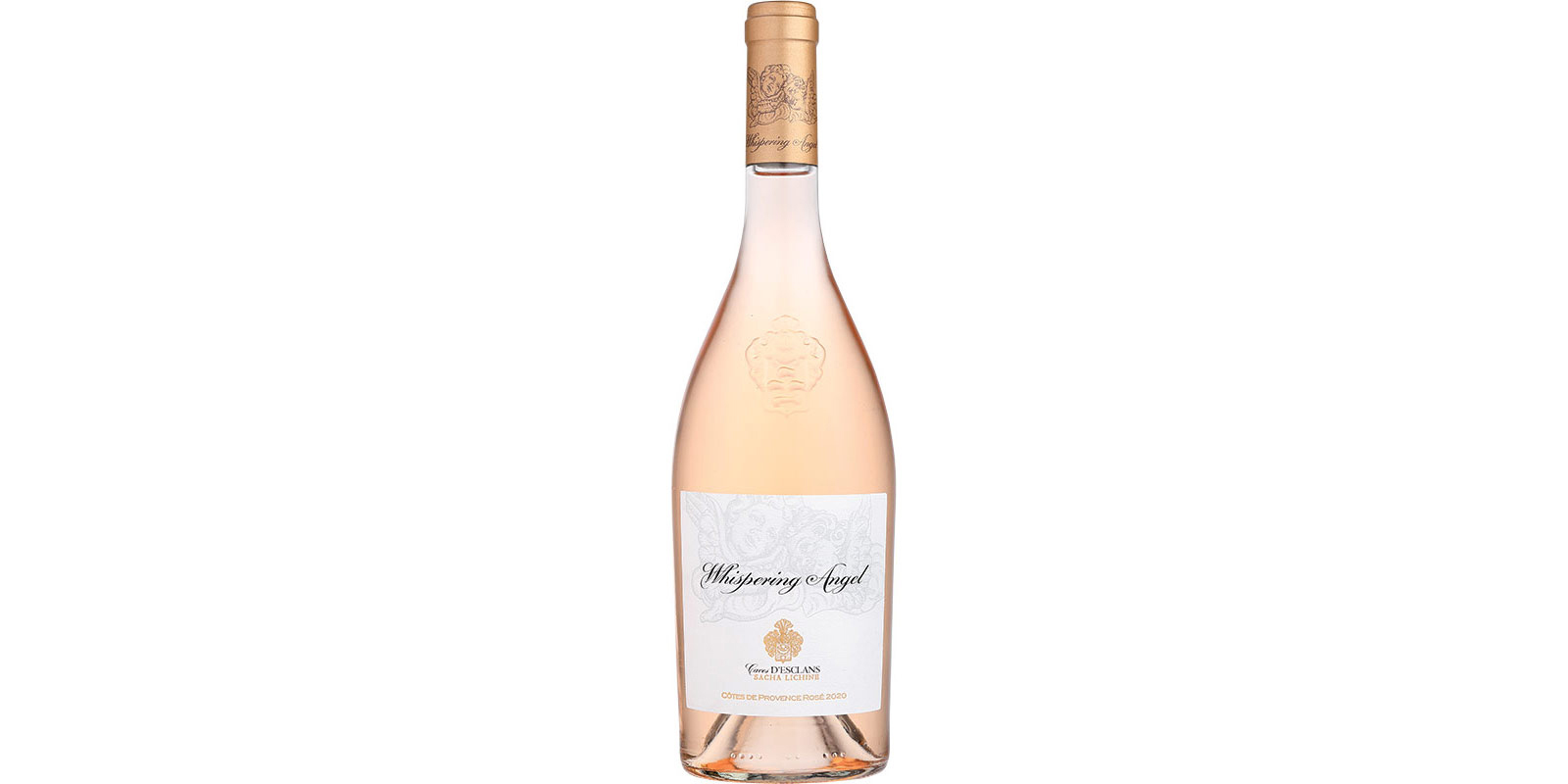
Whispering Angel
Grape: Grenache, Cinsault, Vermentino
The versatile icon that’s as lush as it is refreshing. Perfect with everything, anywhere, any time.
Rock Angel
Grape: Grenache, Cinsault, Vermentino
Partially barrel fermented in oak, this is richer and more complex than its Whispering sibling; Sancerre lovers take note.

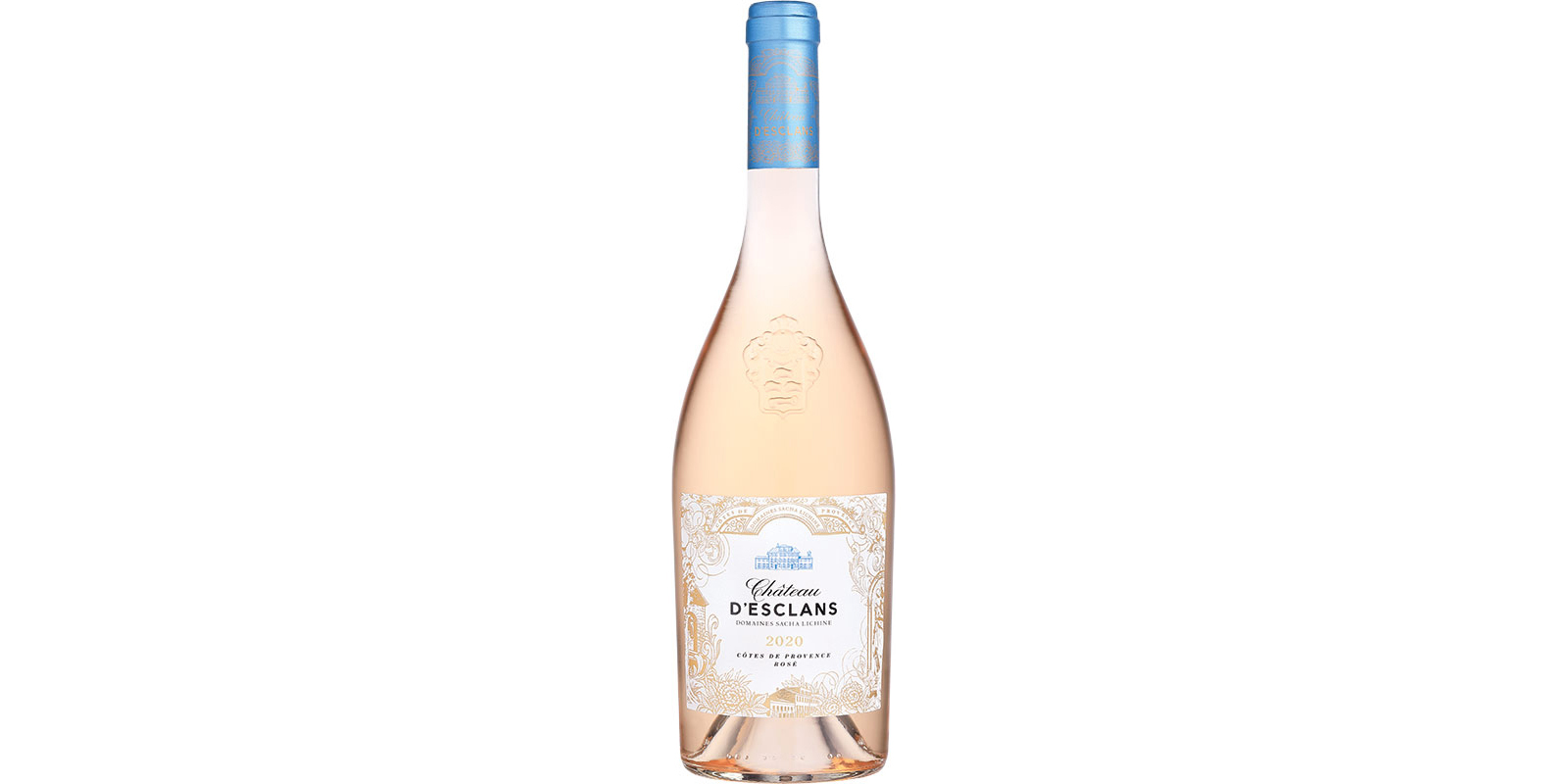
Château d’Esclans
Grape: Grenache, Vermentino
Utilizes both stainless steel and barrel fermentation; creamy texture, structured, with a long finish.
Les Clans
Grape: Grenache, Vermentino
Entirely fermented and aged in oak; full-bodied and quite complex, a top-end rosé that complements beautiful moments.
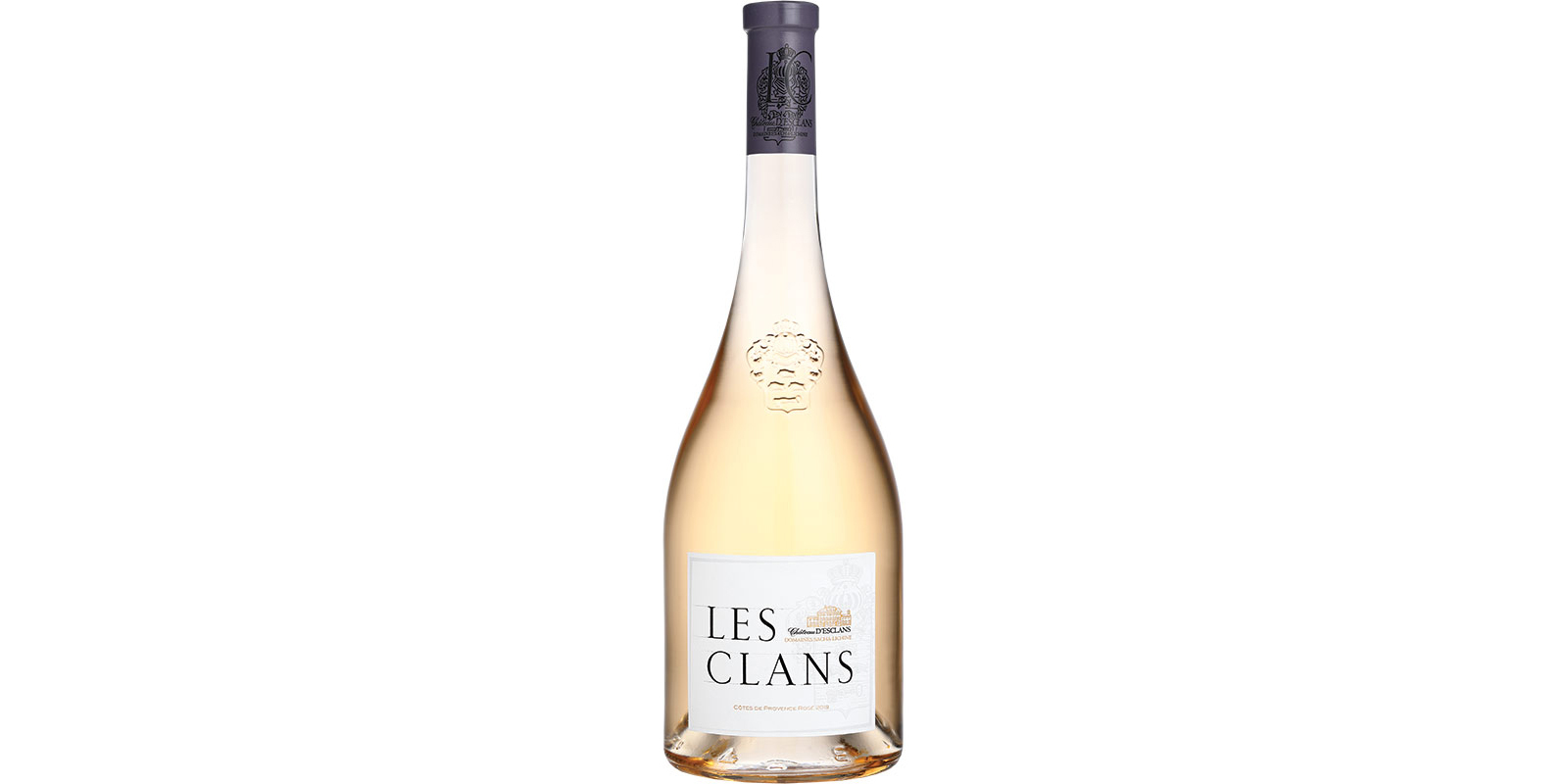
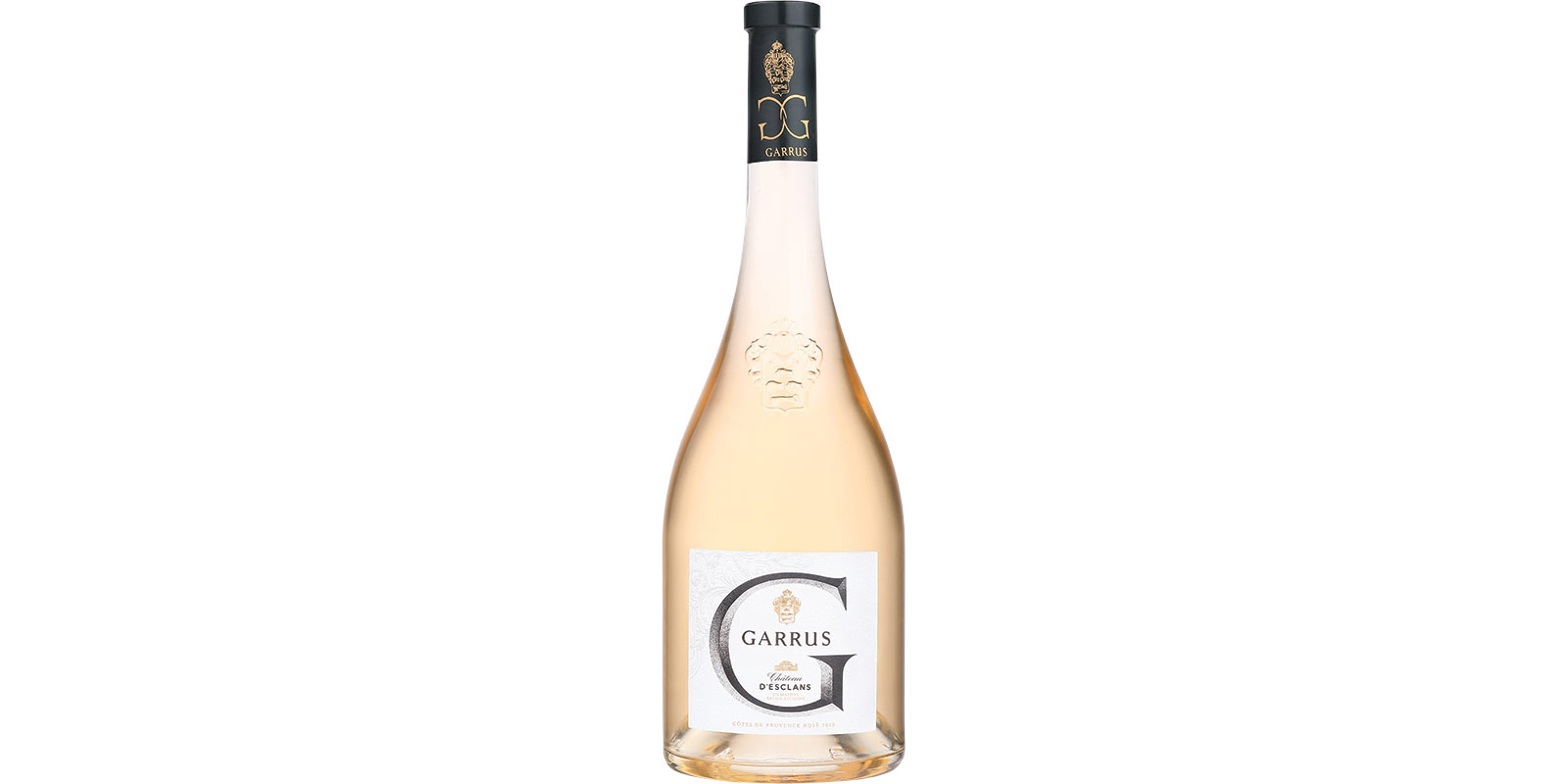
Garrus
Grape: Made from a single vineyard of nearly 100-year-old Grenache vines and from Vermentino
The Château’s flagship. Expect epic character, spice, balance, and a sublime creamy finish. No rosé is better.
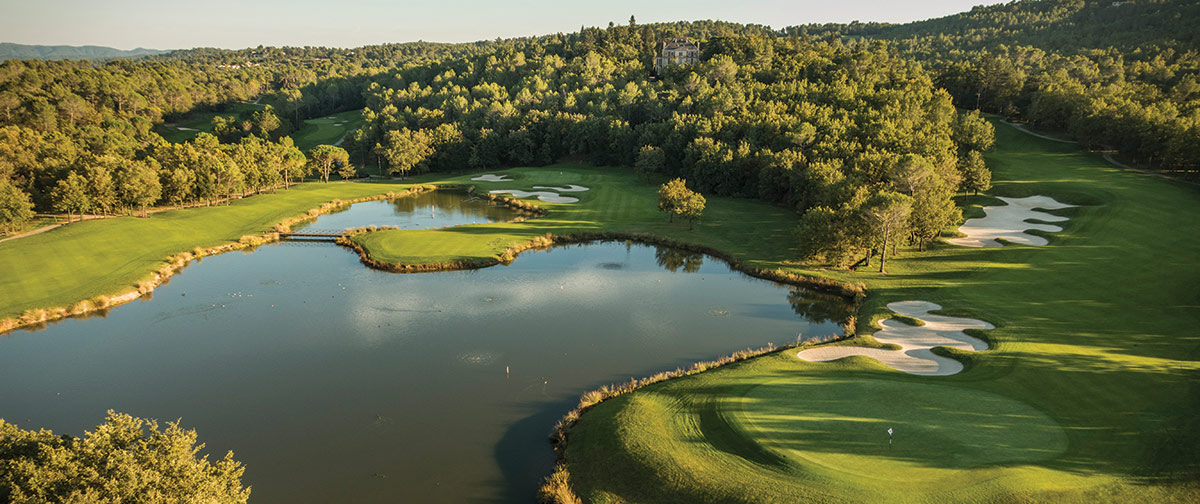
Offering the chic style of the Côte d’Azur gilded by lavender fields and vineyards, Terre Blanche resort in Tourrettes, just 35 minutes from Cannes, offers the best of la vie Provençal. The region already has a five-star designation as one of the world’s loveliest destinations, and the resort only adds to the appeal, with a range of amenities and options to satisfy the most discerning of travelers.
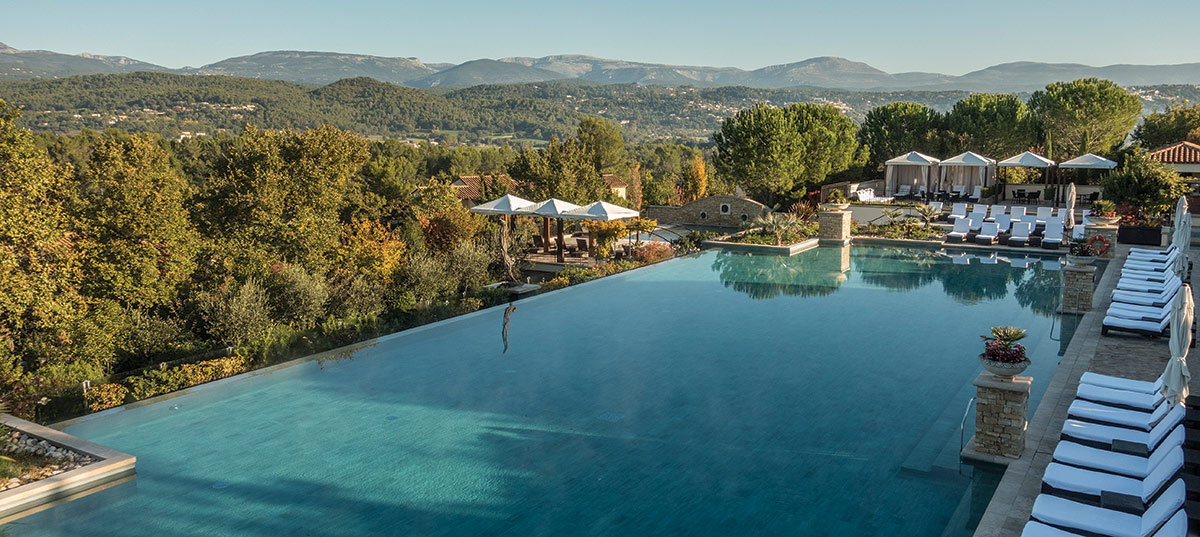
Certainly the appeal begins with the golf, two 18-hole courses offering serious challenges—in beautiful settings—to travelers from all over the world. The Le Château Course is an award-winning track that favors precision play among its numerous water hazards, while the resort’s Le Riou Course is a technical challenge and the annual host of the Terre Blanche Ladies Open, part of the Ladies European Tour Access Series (open to pros and to top-ranked amateurs alike). Le Riou overlooks the hilltop villages of the Pays de Fayence, giving players as charming a French experience as they could want even as they enjoy one of Continental Europe’s best golf courses.
There’s the Albatros Golf Performance Center as well, with a sophisticated Biomecaswing analysis system (for the dedicated), an academy, two-level driving range and club-fitting performance center.
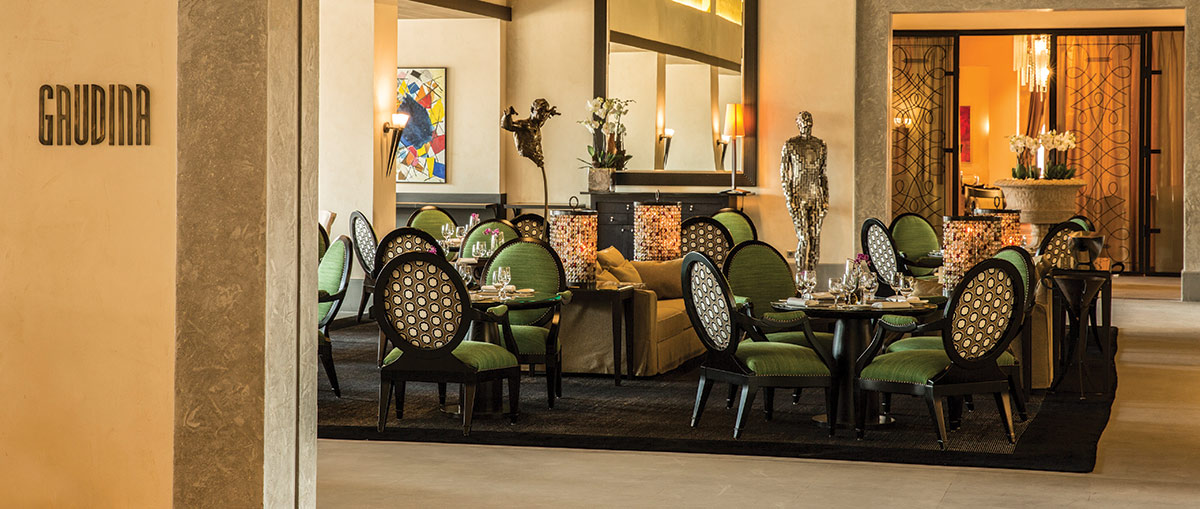
And for when the golf is done, the Terre Blanche Spa is one of Europe’s best, with a heated indoor pool reminiscent of ancient classical baths and a number of private rooms and suites hosting numerous muscle-soothing treatment options. For those who’d rather not relax, the fitness center is cutting edge and there are high-energy training classes available, while on the other end of the spectrum there’s a dedicated Zen Space garden with relaxation chairs and umbrellas set out under the healing Provence sun. Equestrian activities, cycling and hiking in the pastoral countryside, a range of amazing area tours and experiences and a host of top dining opportunities on site confirm 5-star status, while the helipad makes access easy (it’s also easy to reach via car, for those who prefer to drive). Bonjour, indeed.
Follow Us On


| Cookie | Duration | Description |
|---|---|---|
| cookielawinfo-checkbox-analytics | 11 months | This cookie is set by GDPR Cookie Consent plugin. The cookie is used to store the user consent for the cookies in the category "Analytics". |
| cookielawinfo-checkbox-functional | 11 months | The cookie is set by GDPR cookie consent to record the user consent for the cookies in the category "Functional". |
| cookielawinfo-checkbox-necessary | 11 months | This cookie is set by GDPR Cookie Consent plugin. The cookies is used to store the user consent for the cookies in the category "Necessary". |
| cookielawinfo-checkbox-others | 11 months | This cookie is set by GDPR Cookie Consent plugin. The cookie is used to store the user consent for the cookies in the category "Other. |
| cookielawinfo-checkbox-performance | 11 months | This cookie is set by GDPR Cookie Consent plugin. The cookie is used to store the user consent for the cookies in the category "Performance". |
| viewed_cookie_policy | 11 months | The cookie is set by the GDPR Cookie Consent plugin and is used to store whether or not user has consented to the use of cookies. It does not store any personal data. |